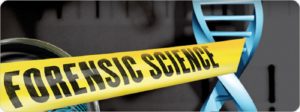In New York, as police officers are being pressured to meet Black and Latino arrest quotas, scientists in a lawsuit claim they were fired for refusing to falsify DNA tests and convict more suspects. This, as another doctor files a suit after losing her job with the medical examiner’s office for questioning an unreliable DNA analysis method.
As TheFreeThoughtPorject.com reported, three scientists who worked for the New York State Police crime lab are suing the department in federal court. Shannon Morris, Melissa Lee and Kevin Rafferty, each of whom worked for the agency for 20 years, claim the state police retaliated against them for identifying flaws in the DNA testing lab that would flag past errors and clear innocent people of wrongdoing. The police were in the process of implementing TrueAllele, a computerized DNA analysis system that would guarantee the accuracy of the tests. However, the system was eliminated due to pressure from the police to convict more people.
According to The Associated Press, the scientists said that had the system been retained, it would have exonerated “a small percentage” of previously convicted suspects.
“There are people that are very pro-prosecution. They were putting pressure on scientists to reach conclusions that were not scientifically valid,” said John Bailey, the lawyer for the scientists. “That’s what my clients were objecting to.”
Morris, who was the associate lab director, was fired last year. Lee and Rafferty, both lab supervisors, remain at the police agency but were disciplined and reassigned. In their suit, the plaintiffs allege that as government employees speaking out on issues of public importance, they are protected from retaliation.
Speaking on behalf of the State Police, Kirstin Lowman said the agency used TrueAllele but canceled the system before the end of the five-year contract.
“The program was not progressing because of the internal investigation. The State Police is committed to the technology and is seeking a new request for proposals to move forward,” she said.
Meanwhile, another unrelated federal civil rights lawsuit has been filed, this one by a doctor who claims she was fired by the New York City Medical Examiner’s office after questioning a problematic technique for analyzing trace DNA samples. Dr. Marina Stajic claims she was given the option of retiring or face termination as a lab director in April 2015, according to CBS New York. At issue was Stajic’s stance against a DNA profiling technique known as low copy number, which, according to critics, should not be used in court due to its unreliability.
Further, Stajic claims she was removed from her position after Barbara Sampson, the chief medical examiner, learned that Stajic voted to require the medical examiner’s office to release a public study about the testing method. Stajic also served on the New York State Commission on Forensic Science, which develops standards for DNA laboratories. The lawsuit states that Sampson was “displeased that Stajic appeared to be aligned with the criminal defense lawyers on the commission,” whom she “viewed as adversarial.” In addition to losing her job with the city, Stajic was removed from the state commission.
“Courts in all five boroughs have recognized that OCME’s DNA techniques are reliable and generally accepted by the scientific community,” said medical examiner spokeswoman Julie Bolcer in a statement.
One has to wonder if these recent lawsuits are merely the tip of the iceberg in terms of errors, mistakes and outright fraud in the testing of DNA testing of samples that place suspects in prison or on death row. Last year, as the Washington Post reported, the FBI and U.S. Department of Justice admitted that over the course of more than two decades, 26 of 28 examiners in an FBI forensic unit gave flawed testimony in 95 percent of 268 criminal trials. The examiners work in an elite unit dealing with microscopic hair comparisons. In 32 of these cases, defendants were sentenced to death, and 14 of them were executed or died in prison, according to the National Association of Criminal Defense Lawyers and the Innocence Project. Also last year, the Post reported that the FBI “has notified crime labs across the country that it has discovered errors in data used by forensic scientists in thousands of cases to calculate the chances that DNA found at a crime scene matches a particular person.”
In 2013, the New York Times reported that the New York City Medical Examiner’s office had to review over 800 rape cases, after it was revealed that a lab technician mishandled critical DNA evidence. In addition, according to the San Francisco Chronicle last year, a police crime lab technician and supervisor who were implicated for misconduct failed a DNA proficiency exam. Unfortunately, 1,400 cases were prosecuted as a result of the work conducted by the technician. Will we ever know how many innocent people are out there?



